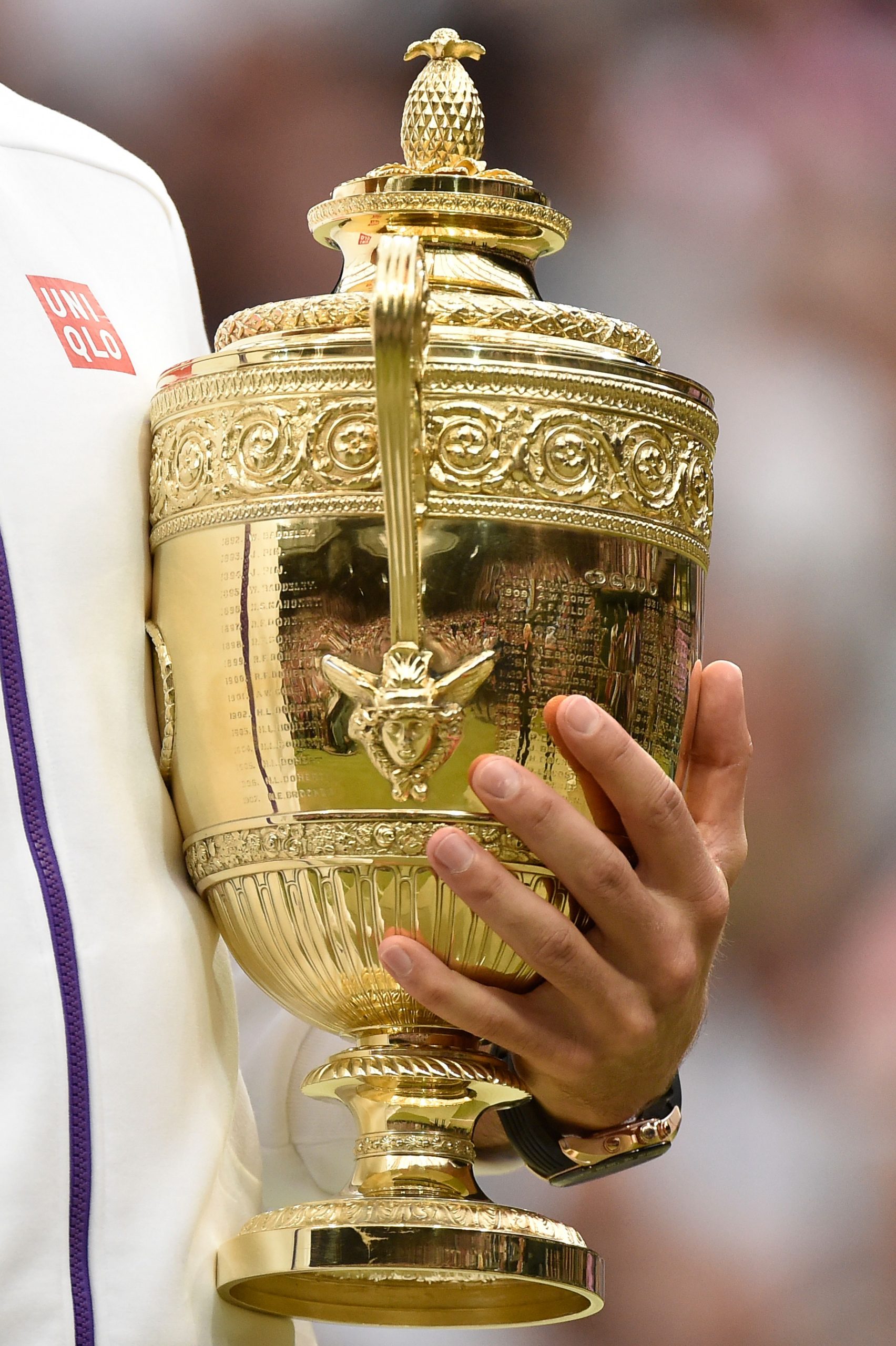How pineapple mania gripped Britain
From the Americas to the roof of country-house follies, Matthew Dennison traces the journey of the pineapple, one of Georgian Britain’s most coveted fruits.
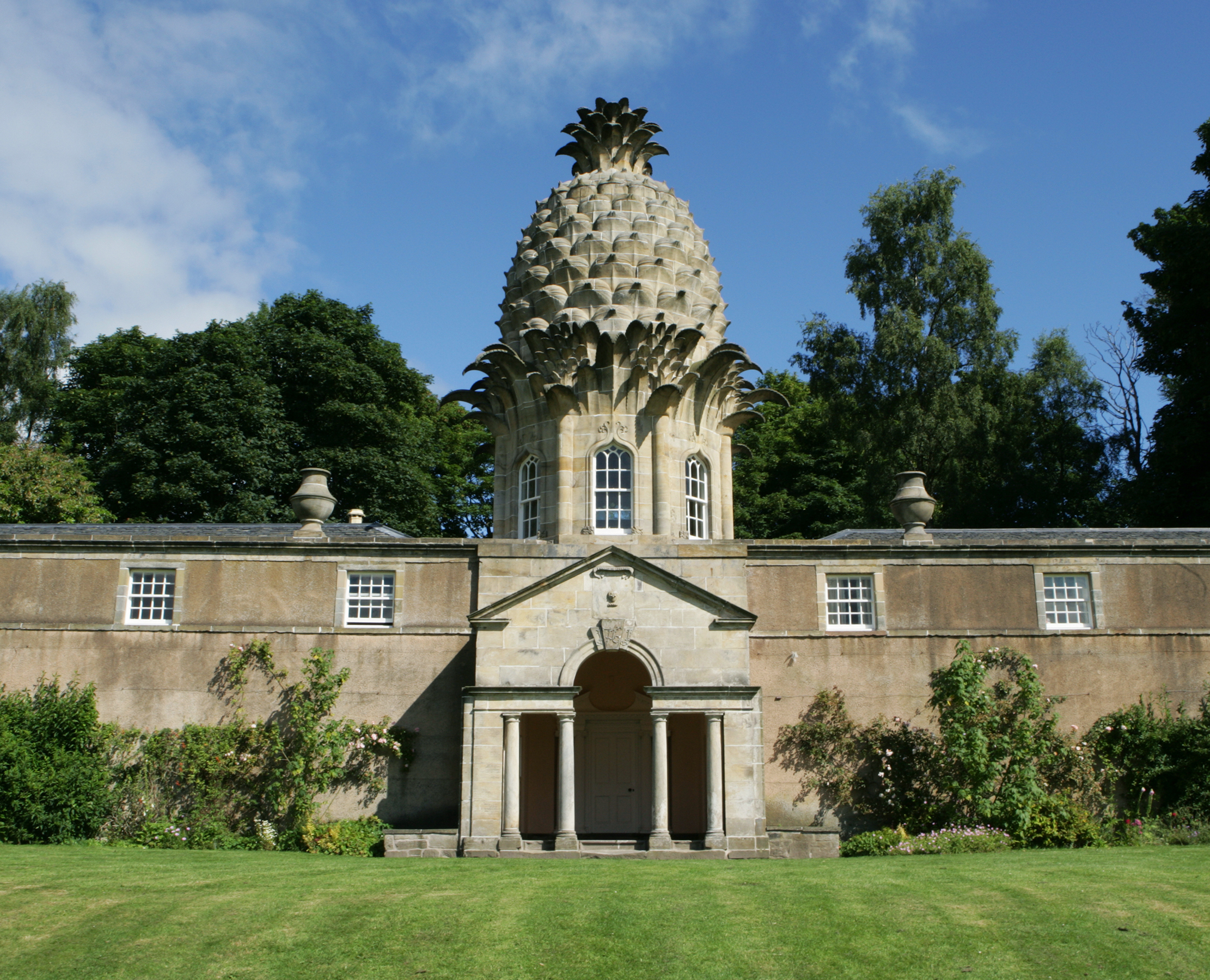
In the summer of 1767, it was a source of some surprise to the writer of the Manchester Mercury that Edward Higgins, committed to Carmarthen Castle for burglary, hadn’t included among booty stolen from the home of Mrs Biven of Laugherne any pineapples.
Having made himself comfortable in Mrs Biven’s kitchen —to the extent of spreading a cloth on the table and lighting two candles in silver candlesticks before eating a chicken— Higgins ‘got over a Wall into the Garden, and went into the Hot-house, where were many Pine-Apples fit to take’. Higgins, however, ‘took only four Cucumbers’.
To the 18th-century reader, his was a curious choice. The pineapple was one of Georgian Britain’s ultimate objets de desir. With good reason, Sheridan’s verbally maladroit Mrs Malaprop, in The Rivals, confuses ‘pineapple’ for ‘pinnacle’ in her commendation of Capt. Absolute as ‘the very pineapple of politeness’.
To the play’s first audiences, pineapples did, indeed, represent a pinnacle: the costliest, most exotic, most desirable fruit to find its place on Georgian dining tables.
Window displays of pineapples were among the means used by London’s best-known luxury fruit-seller, Owen and Bentley, to dazzle fashionable shoppers and, in 1786, Sophie von la Roche recorded ‘behind the handsome glass windows pyramids of pineapples... We enquired the price of a fine pineapple and did not think it too dear at 6s’. That was the equivalent of a week’s wages for a junior gardener.
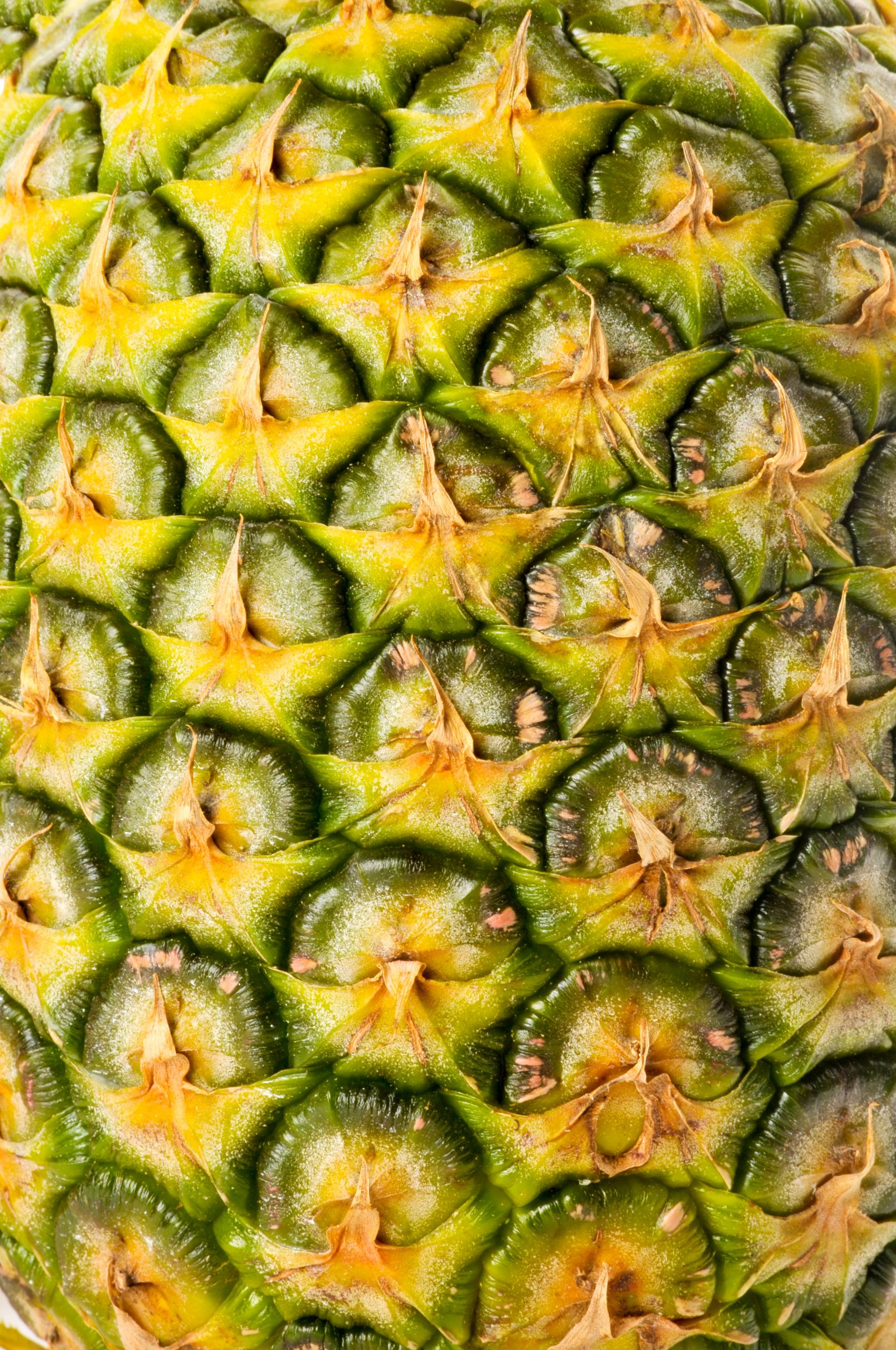
In Berkeley Square, a short walk from Owen and Bentley, Italian confectioner Dominic Negri was pulling no punches: he called his shop The Pineapple and decorated his trade cards with an image of the coveted fruit. No wonder that when, in 2019, Sotheby’s produced an 18th century-inspired cookbook, The Art of Cooking: A Contemporary Twist on Georgian Fare, the book’s cover illustration featured a gilded pineapple.
A single pineapple survived the homeward journey from Christopher Columbus’s second voyage to the Americas in 1496. Columbus presented it to his patrons, Ferdinand and Isabella of Spain. He preferred the fruit, the King announced, ‘to all others’ and Spanish explorers agreed, according to an English translation of an account of Columbus’s travels published nearly a century later: ‘All such as have eaten of them newly gathered in their native soil, do marvellously commend their sweetness and pleasant taste.’
Sign up for the Country Life Newsletter
Exquisite houses, the beauty of Nature, and how to get the most from your life, straight to your inbox.
Ferdinand’s view held sway for more than four centuries, until the availability of canned fruit tarnished the pineapple’s exoticism. The opinion of an 18th-century English gardener that ‘in Deliciousness of Taste and exquisite Flavour’ the pineapple ‘so far exceeds all Fruits’ was one shared by fellow gardeners and garden-owners, cooks, dress-makers, artists and even architects.
For a long time, however, for the majority of Europeans, the pineapple’s taste was simply a matter of conjecture. John Parkinson, formerly botanist to Charles I, published a description of the fruit, in his Theatrum Botanicum of 1640, as ‘scaly like an Artichoke at the first view, but more like to a cone of the Pine tree, which we call a pineapple for the forme... being so sweete in smell... tasting... as if Wine, Rosewater and Sugar were mixed together’, but it seems unlikely that he had actually tasted the fruit himself.
Only two decades later, in 1661, did Samuel Pepys record seeing a pineapple delivered to Charles II from Barbados. ‘The first that were ever seen in England,’ Pepys explained, had arrived four years before this and were given to Oliver Cromwell.
In August 1668, pineapples were on the menu when Charles set out to impress the French ambassador. It is clear from diarist John Evelyn’s account that, once again, these were imported pineapples and that English gardeners, in the absence of heated glasshouses, had yet to discover a means of growing and ripening the fruit at home.
On this occasion, recorded Evelyn, the King gave him a piece of pineapple from his own plate. Evelyn described its taste as resembling that of a quince or melon, with ‘a graceful acidity’. In truth, he was disappointed. He concluded that the pineapple in question was ‘much impaired in coming so far’.
Instead, at the end of the century, an enthusiastic Dutch gardener, Agneta Block, fruited a homegrown pineapple in the gardens of her estate of Vijverhof, near Leiden. Block was sufficiently proud of this breakthrough to commission a group portrait of her family that included the trophy fruit. Its size and distinctly unripe colouring in Jan Weenix’s picture of 1694 point to the progress still to be made in European pineapple cultivation.
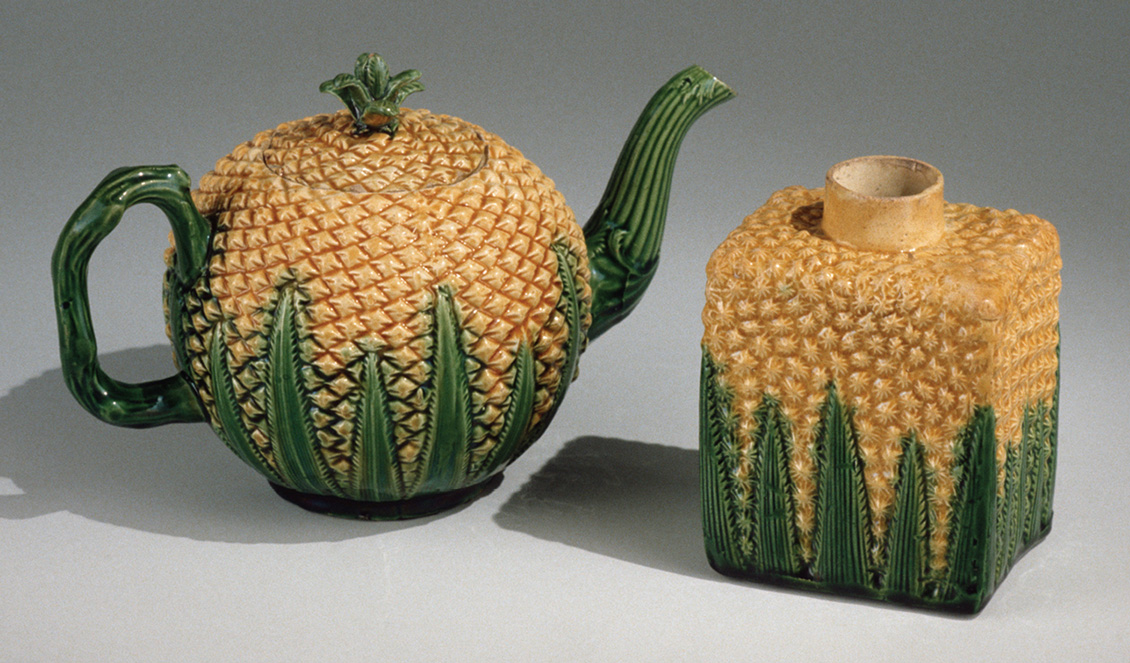
An earlier painting at Houghton Hall, Norfolk, of which there are copies in the Royal Collection and at Ham House, London, shows Charles II’s gardener, John Rose, offering a pineapple to the King, possibly at Dorney House. Almost certainly incorrectly, the pineapple in question — again, a rather off-colour specimen — was long identified as the first one grown in England.
As the painting depicts an imaginary meeting — Rose was dead by the time of Hendrick Danckerts’s double portrait — it can more safely be interpreted as a celebration of the pineapple’s lofty status, the so-called ‘king of fruits’ and a fitting gift for a monarch.
Not until 1715 can an English garden lay claim with any certainty to producing a ripe pineapple: the fruit that Dutch gardener Henry Telende gave to his employer, Sir Matthew Decker. As was Block, Sir Matthew was moved to commission a painting of the exotic beauty.
For obvious reasons, neither image betrays the besetting problems of indoor pineapple growing for British gardeners: the enormous cost of heating glasshouses year round and the proliferation of insects that thrived in artificially heated pineapple pits or pinery- vineries, where pineapples under-planted vines.
In Smollett’s The Adventures of Peregrine Pickle of 1751, Mrs Grizzle accurately denounces pineapples as ‘unnatural productions, extorted by the force of artificial fire, out of filthy manure’. In 1777, the Duke of Portland’s gardener, William Speechly, claimed to have produced a solution to the problem, which he offered, on payment of five guineas, to ‘all Noblemen, Gentlemen and Gardeners, who possess Pine-Stoves’.
The Duke endorsed Speechly’s advertisement, perhaps anxious to recoup some of the considerable cost of the 10,000 pineapple plants then under cultivation at Welbeck Abbey in Nottinghamshire.
William III, by contrast, contented himself with a silver pineapple. Shortly after the war that forced Louis XIV to recognise him as rightful King of England, William took delivery of a magnificent silver table, made by silversmith Andrew Moore to a design by Daniel Marot.
Among its features is a large pineapple at the intersection of the table’s elaborate X stretcher. This may simply be a decorative flourish; alternatively, the incorporation of ‘the fruit of the sun’ may represent Dutch William crowing at the expense of his erstwhile enemy, the Sun King.
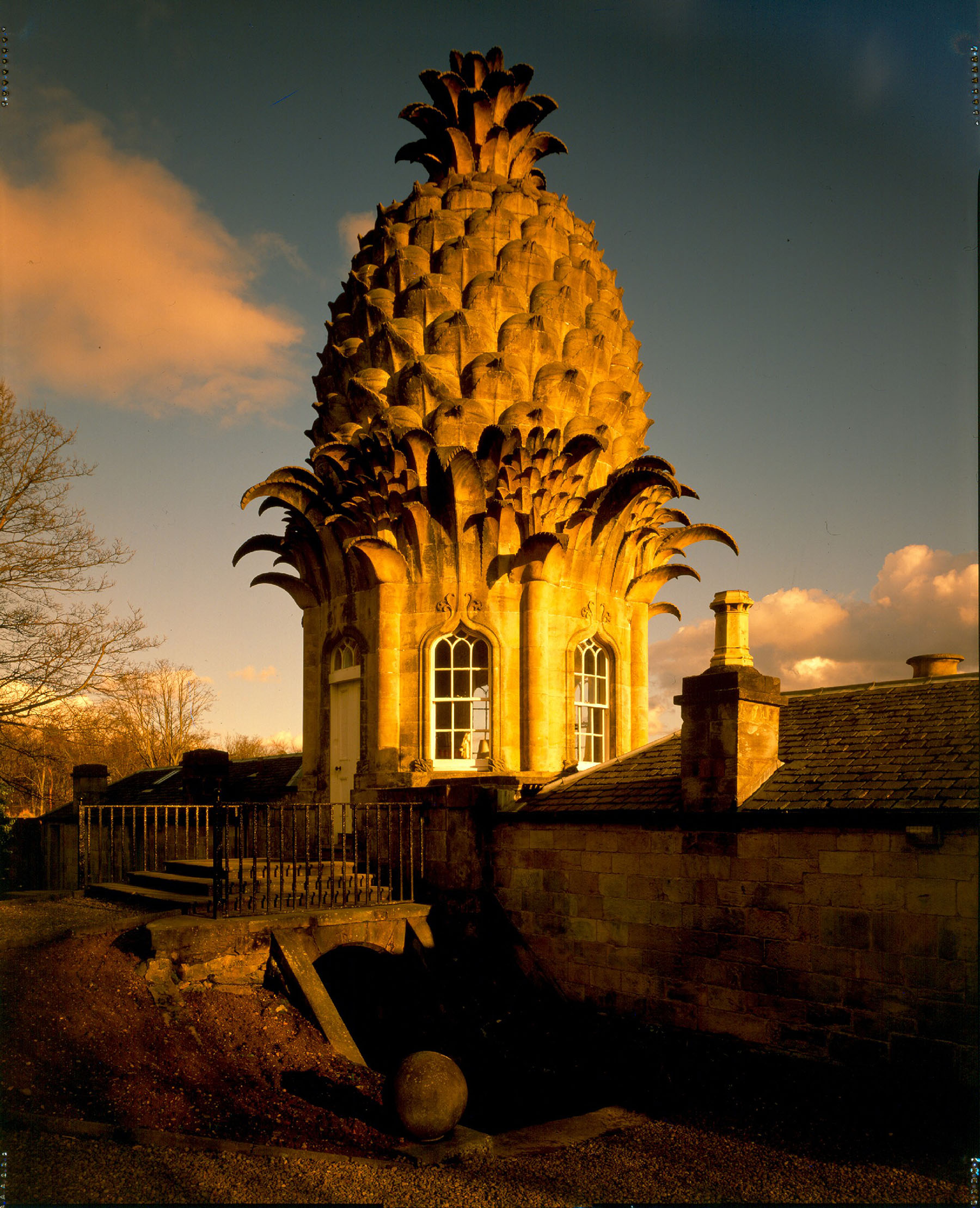
Unsurprisingly, given its desirability, the fruit often features in 18th-century decorative arts. Surviving wallpaper fragments from Joshua Reynolds’s house in Leicester Square, London WC2, from the mid 1700s include a damask-style design centred on a large pineapple motif and Josiah Wedgwood, a man with a keen nose for a commercial trend, produced green-and-yellow pineapple-inspired earthenware in the 1760s.
The acme of such design is surely the extravagant, pineapple-shaped summerhouse built on his estate at Elphinstone by John Murray, 4th Earl of Dunmore, the last British governor of Virginia, possibly to designs by Sir William Chambers.
The glasshouses once ornamented by this towering fruity folly have long gone, but, after restoration by the Landmark Trust, The Pineapple near Airth, in Falkirk, is available for holiday lets. It is an appropriate rebirth for a building in the shape of a fruit once widely regarded as a symbol of hospitality and welcome.
That Dickens’s alcoholic evangelist Revd Stiggins, in The Pickwick Papers, has a taste for ‘hot pineapple rum and water’ suggests the declining exoticism of the fruit as glasshouse innovations increased its availability.
Even today, however, one British pineapple remains distinctly exclusive: it crowns the late-19th-century silver-gilt cup presented to the winner of the men’s singles title at Wimbledon.
